Is it Okay to Fertilise Your Lawn After Mowing?
A beautiful, lush lawn is a source of pride for many homeowners. It not only adds to the aesthetics of your property, but also provides a functional space for outdoor ...

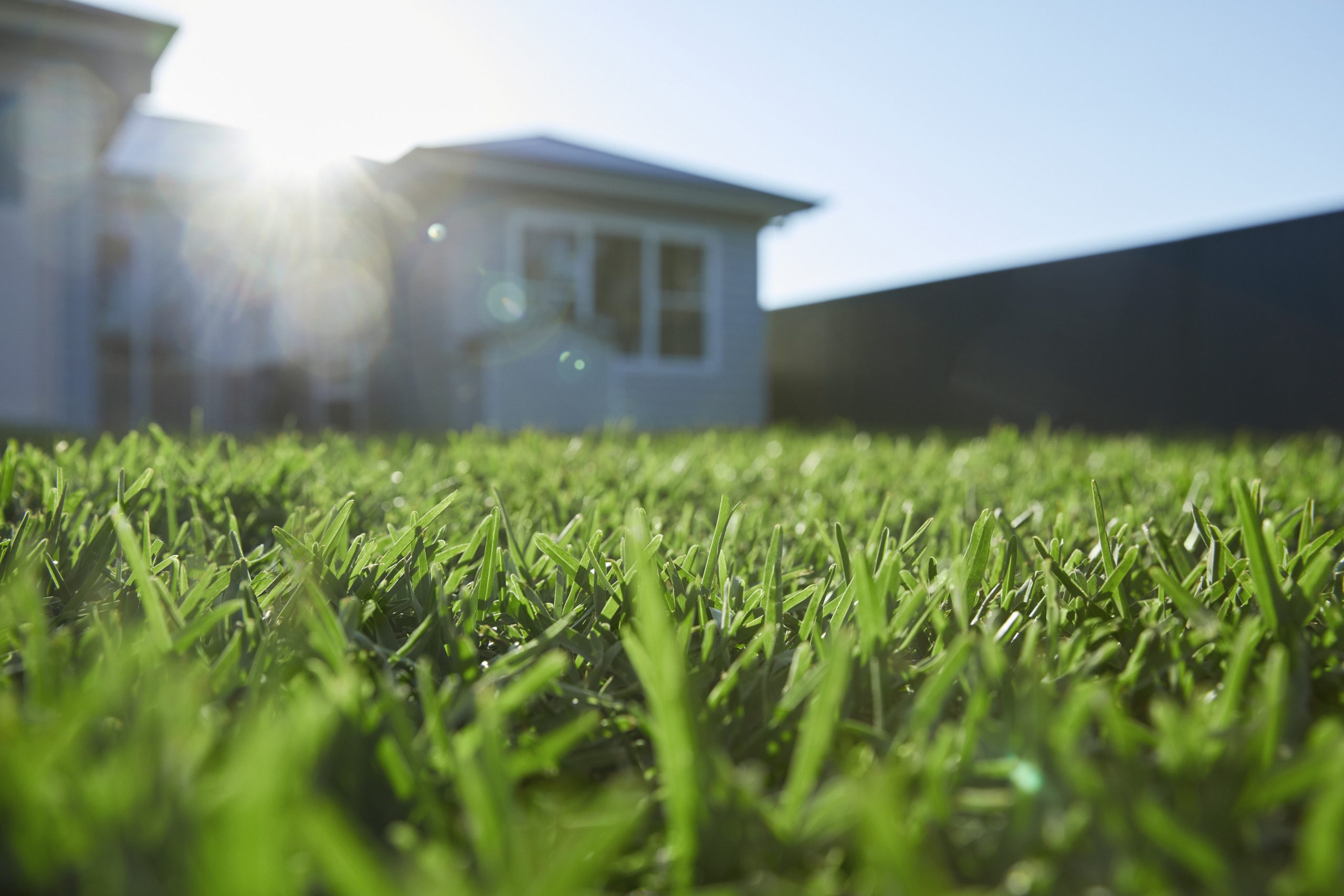 Fertilising is one of the best things you can do to prepare your lawn for each season as it makes it strong and healthy and ready for any conditions that lie ahead.
Fertilising is one of the best things you can do to prepare your lawn for each season as it makes it strong and healthy and ready for any conditions that lie ahead.
But with so many fertiliser types on the market, it can be hard to work out which one suits your lawn’s needs.
First, knowing if your lawn’s soil is lacking in any nutrients is a great start and will help you select a suitable lawn fertiliser.
The three key nutrients in any fertiliser are nitrogen, potassium and phosphorus.
Once you understand your lawn’s needs, you will then find a large range of fertiliser types on the market, which include:
Lawn fertilisers are specially formulated products that contain the essential nutrients needed to aid the growth of a healthy lawn. These three essential nutrients are nitrogen, phosphorus and potassium.
Fertilisers come in a range of formulations and release methods designed for specific lawns, application methods and seasonal timing.
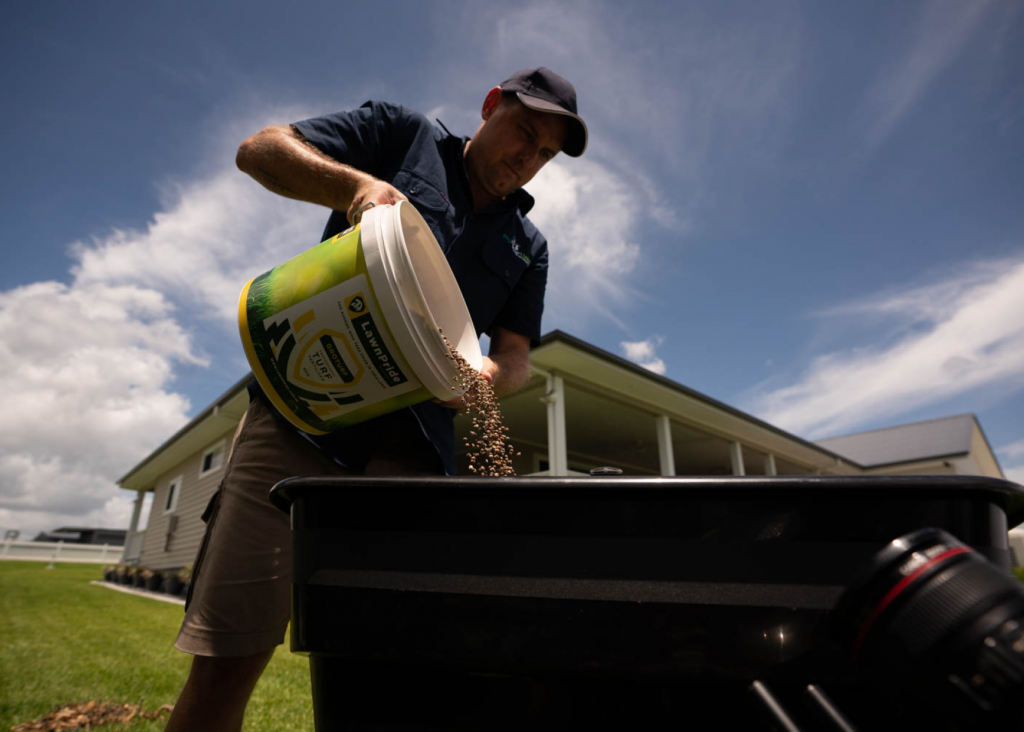
Fertilising is an essential part of your lawn maintenance program that encourages the growth of healthy grass year-long.
The frequency of fertilising depends on the type you use but we suggest doing it at least twice a year – once in autumn to protect it throughout the winter and once in spring to help boost the growth and carry you through the stress of a hot summer.
The type of fertiliser you choose will depend on your budget, practicality, convenience and most importantly your lawn’s health needs.
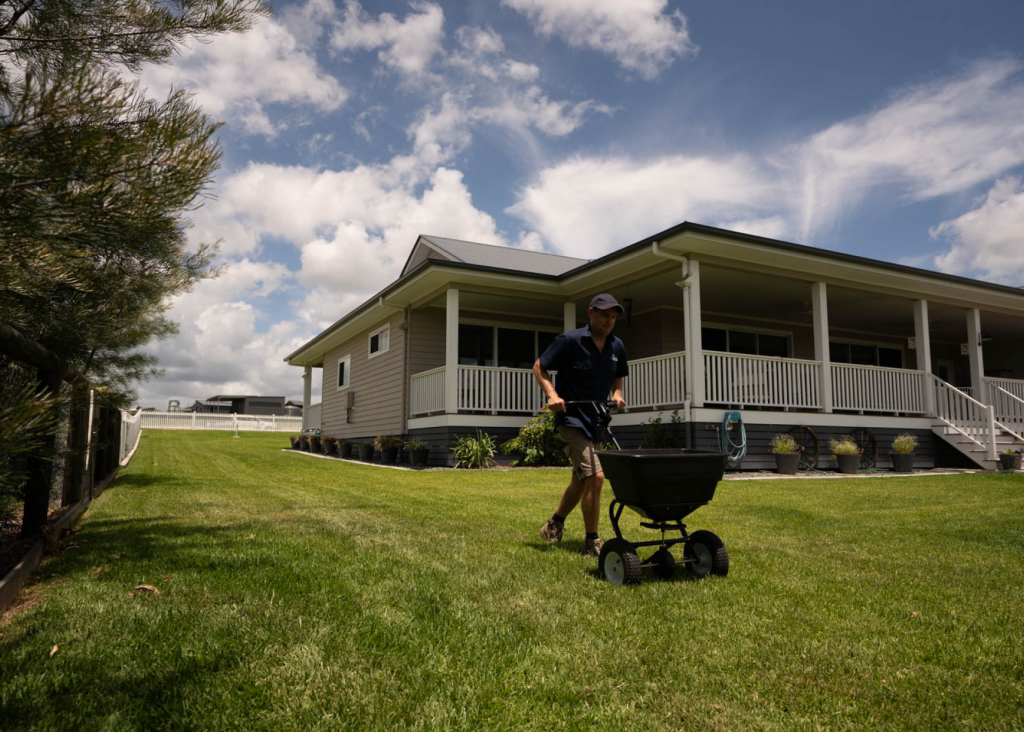
Granular fertilisers usually make the best slow-release fertilisers because the solid nutrients are absorbed by your lawn at a much slower rate. While the release period can vary, slow-release granular fertilisers generally feed your lawn gradually over three months.
Slow-release fertilisers have the added benefit of the longer-term feeding of your lawn and minimal nutrient wastage through leaching. They contain all the essential nutrients found in other fertilisers such as nitrogen, potassium and phosphorus.
A slow-release fertiliser promotes strong, steady growth, which will result in the root system developing properly and your lawn strengthening itself in the long term.
Most often, a slow-release fertiliser, is a fertiliser coated with plastic resin or sulfur-based polymers which slowly break down from water, heat, sunlight and/or soil microbes over time.
Granular slow-release fertilisers can be applied four times a year (each season) and are a cost-effective method of keeping your lawn healthy. They are easily stored and can be bought in bulk.
The price of your Granular fertiliser really does depend on what size you choose to purchase. For instance, a 4kg bucket of LawnPride TurfMaxx sells for $27.72, while a 20kg bag of LawnPride Maintain Mini sells for $88.
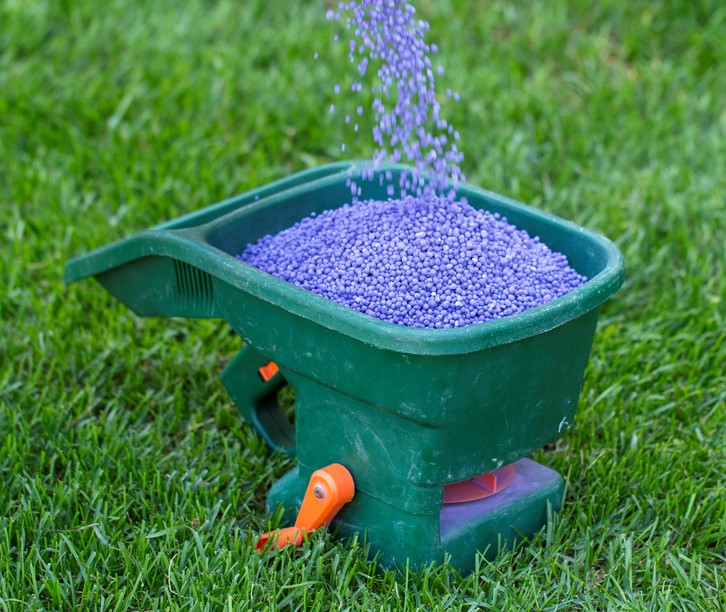
Traditional lawn fertilisers are often the cheapest granular fertilisers that cause a quick spike in the growth and greening-up of your lawn.
Traditional lawn fertilisers require high application rates and only supply your lawn with short-term feed.
They need to be applied frequently and also tend to dump their nutrient load immediately after watering into the lawn which can lead to high nutrient run-off.
Traditional fertilisers can range in price from about $25 for a 8kg bucket to $90 for a 20kg bag. myhomeTURF recommendes GroTurf Fertiliser 8kg or LawnPride Groturf 20kg
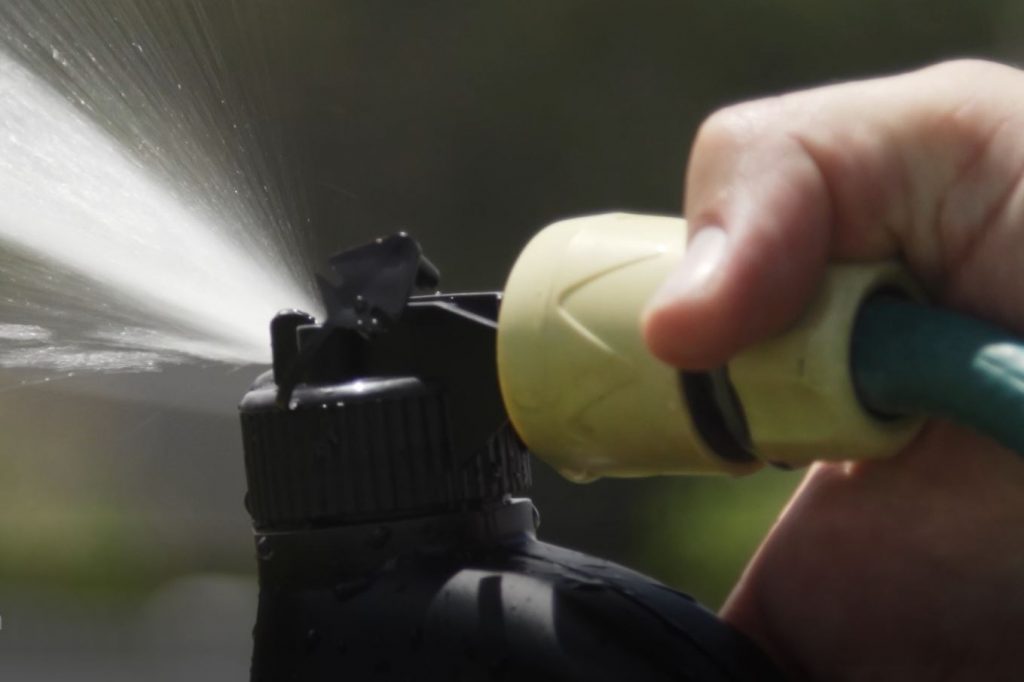
Liquid fertilisers are solutions or concentrated solutions that can easily be connected to your hose and applied to your lawn. Concentrated solutions can be applied using appropriate spray equipment.
Liquid fertilisers have a good mix of the lawn’s essential nutrients – nitrogen, phosphorus and potassium – and are quick reacting in terms of feeding and greening-up your lawn as they are easily absorbed through leaves and roots.
If you are after a fast-acting fertiliser for your lawn, then liquid fertiliser is the answer. They are easy to handle and apply and also offer uniform application. However liquid fertiliser does not have the same slow-release abilities as granular fertiliser. This means liquid fertilisers are best suited for light, frequent feedings, or as a supplement to granular fertiliser during the growing season.
If you choose to purchase the larger bottles of Concentrate Liquid Fertiliser – say 5 Litres – you will have to mix this with water and use a spray applicator to apply to your lawn. Careful calculations will need to be made, as to the proportion of liquid fertiliser and water to add, to ensure safe and accurate applications.
Be sure to carry out correct safety procedures when using the spray applicator – such as appropriate Personal Protective Equipment (PPE) gear.
The price range of liquid fertiliser does depend on the amount of your purchase. For instance, from $22 for a 2L bottle of LawnPride TraceMaxxHose-On to $50 for a 5L concentrated bottle of LawnPride TraceMaxx.
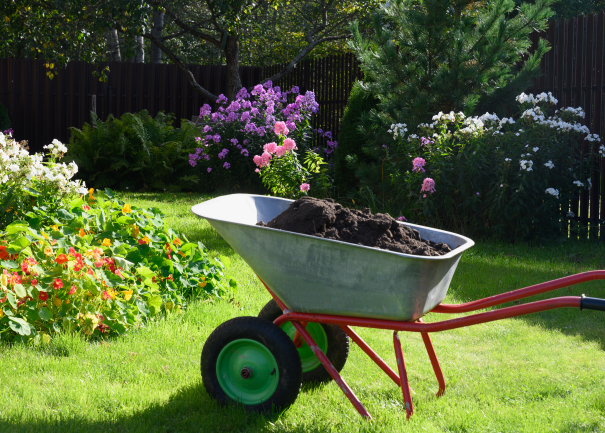
Most recommended Organic Lawn Fertilisers are generally a blend of both natural (organic) and synthetic (manufactured) fertiliser. By using organic lawn food together with a soil improver you are combining the features of both a slow release fertiliser as well as natural ingredients such as seaweed, fish, manure and bio-stimulants.
A ‘true’ organic lawn fertiliser is one that has been certified as 100% organic, consists of either animal or vegetable matter and contains no artificial or synthetic materials. The simplest way to check that it is 100% organic is by looking for the Australian Organic Certified logo on the bottle or pack.
Since organic lawn fertilisers are natural products, it is hard to over-fertilise and in fact, they make your soil and lawn health strong. As organic lawn fertilisers can be more expensive than other fertilisers it is possible to make your own by composting manure – such as from cattle or chooks.
Organic fertiliser can cost anywhere from $20 to $100 depending on size and product.
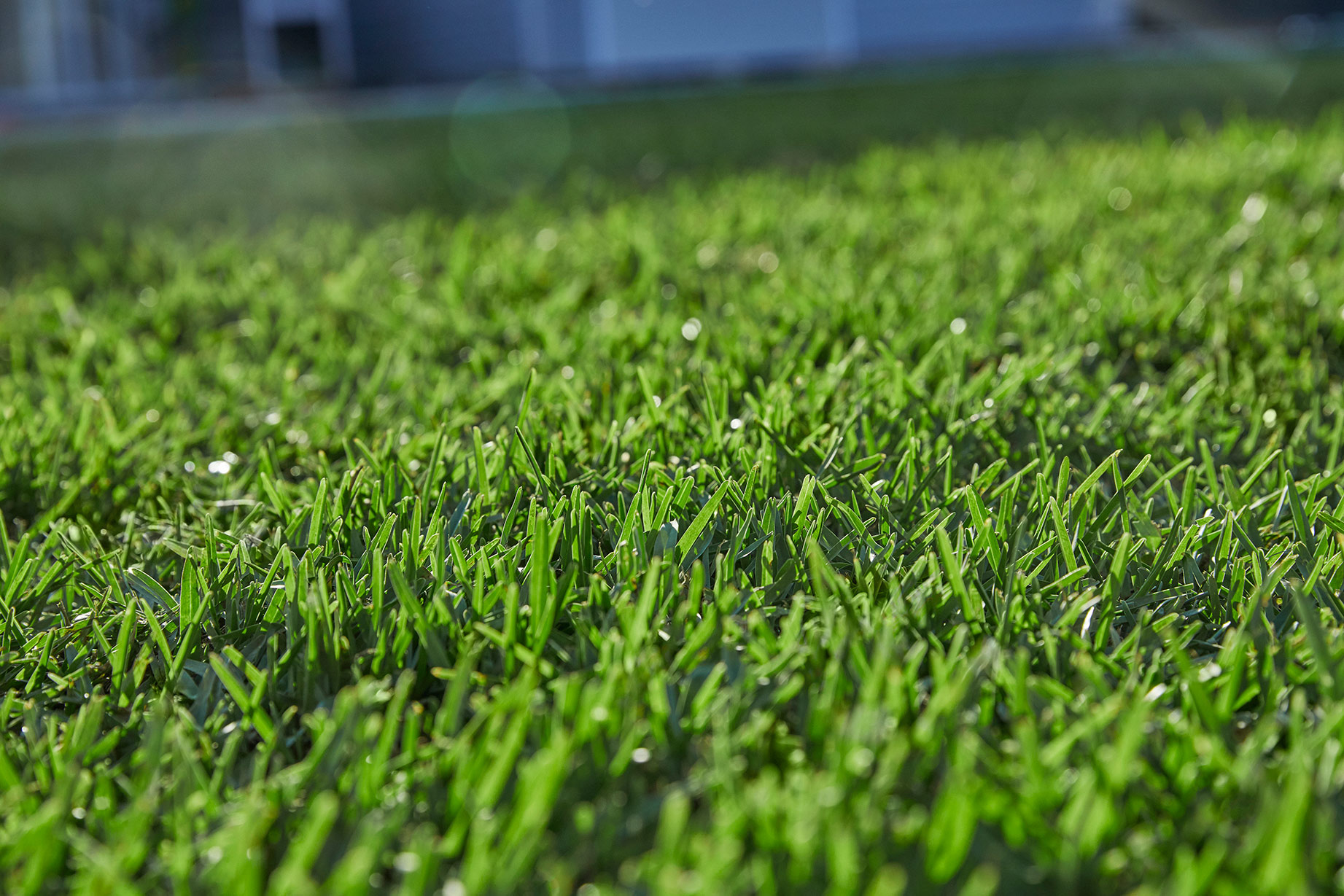
The type of fertiliser you choose for your lawn will depend on your budget, practicality, convenience and most importantly your lawn’s health needs.
So once you have determined your lawn’s nutritional needs and budget you have the options of using say a slow release fertiliser, traditional fertiliser, quick-acting liquid fertilisers or organic fertiliser.
Finally, it is always important that you pay attention to your lawn’s needs in terms of the three main nutrients – nitrogen (N), potassium (K) and phosphorus (P).
The ratio of nutrients on any lawn fertiliser label is represented by N-P-K and states the amount of each.
For instance, a 10-10-10 is a balanced lawn food with equal parts nitrogen, phosphorus, and potassium. Nitrogen promotes foliar growth and color. Phosphorus is useful in encouraging flower and root growth, and early establishment. Potassium in lawns enhances the plant’s ability to use nitrogen.
Remember a balanced lawn is a well fed and healthy lawn!
And don’t forget the myhomeTURF online shop has the best range of fertilisers to suit your lawn. If you are unsure what fertiliser is right for you read myhomeTURF’s Concise Lawn Fertiliser Guide.
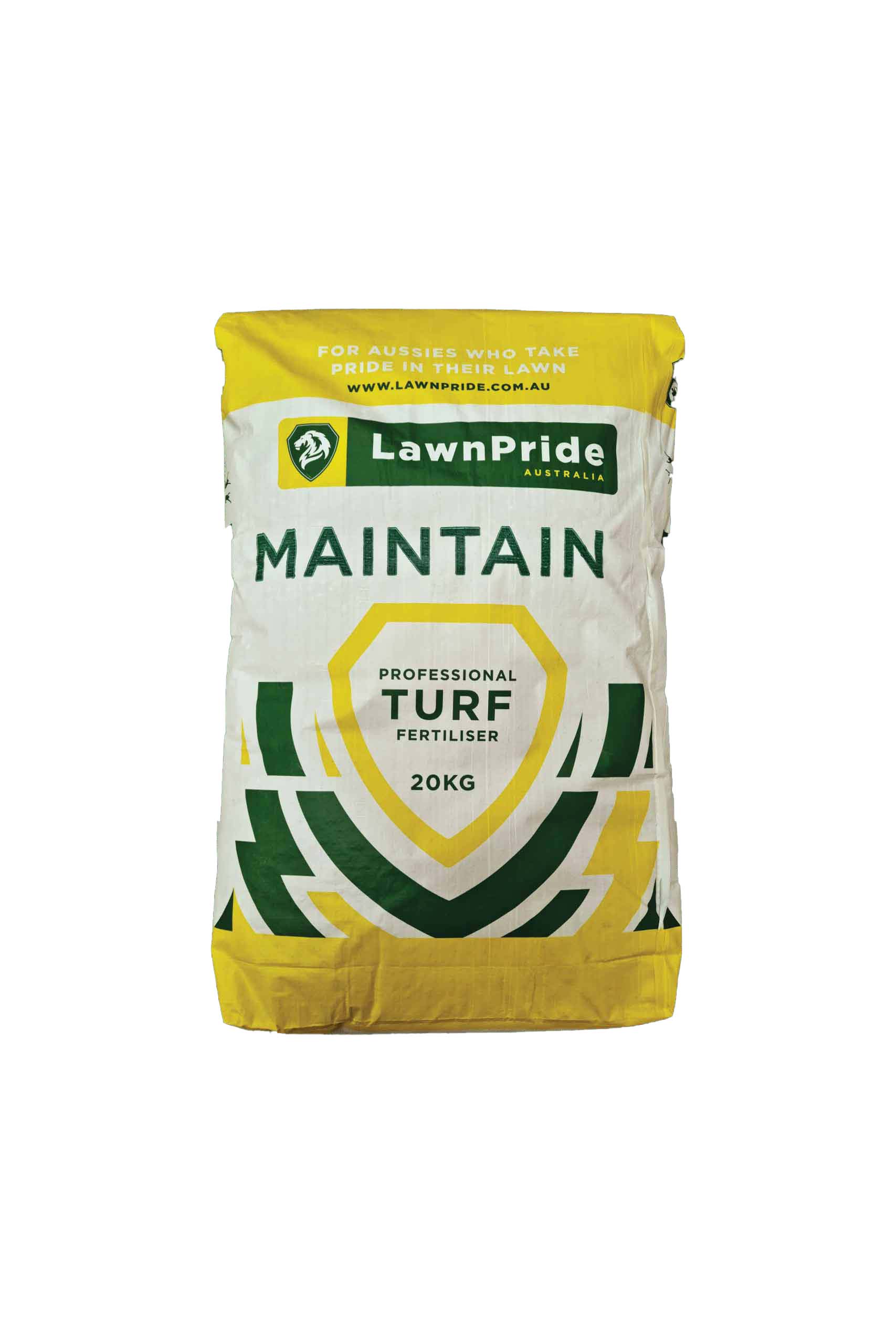
Lawn Pride Maintain 26-2-9 + 3.4 Fe 20kg is one of the most popular granular all-round lawn fertilisers on the market with the active ingredients of Nitrogen (N – 26), Phosphorus (P – 2), Potassium(K – 9) and Iron (Fe – 3.4). Suitable for Zoysia, Kikuyu, Couch and Buffalo grasses. Always read the safety directions and instructions on the product label before use.
SHOP NOW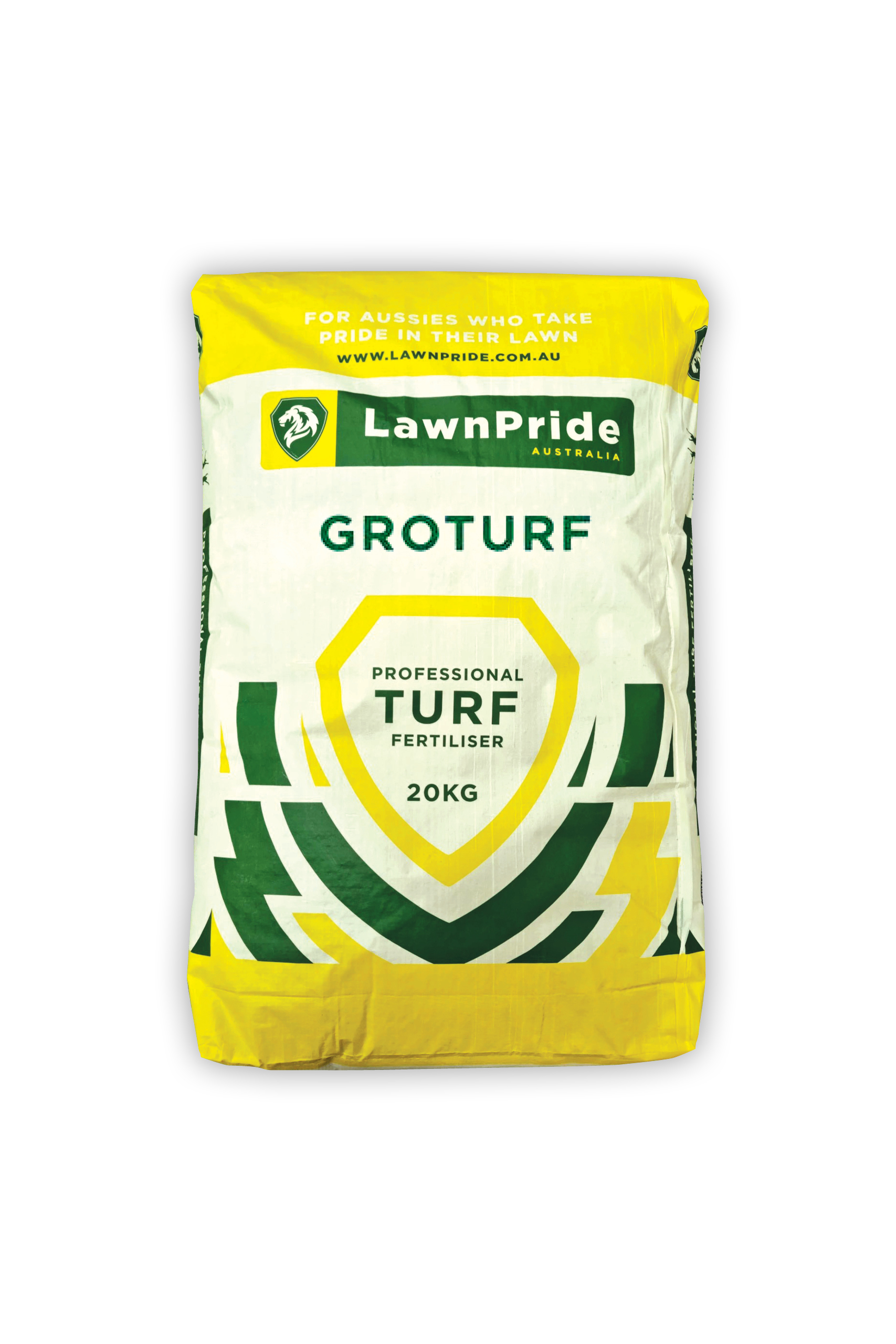
LawnPride Groturf 15-4-11 + Traces 20kg is an instant release granular fertiliser designed to initiate rapid growth of your lawn thanks to extra trace elements that build up your soil’s nutrients. Suitable for Zoysia, Kikuyu, Couch and Buffalo grasses. Always read the safety directions and instructions on the product label before use.
SHOP NOW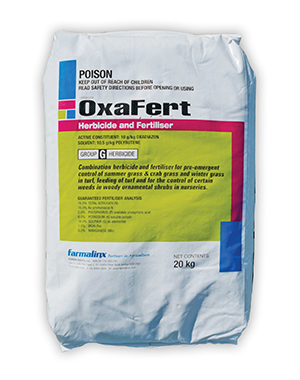
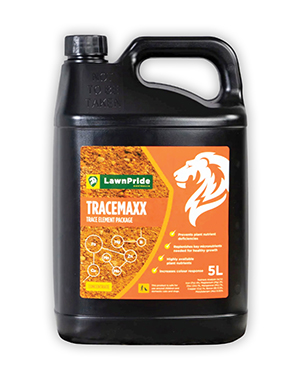
LawnPride TraceMaxx 5L Concentrate provides a complete package of the 9 essential Trace Element nutrients that aid in preventing plant nutrient deficiencies. Suitable for Zoysia, Kikuyu, Couch and Buffalo grasses. Always read the safety directions and instructions on the product label before use.
SHOP NOW